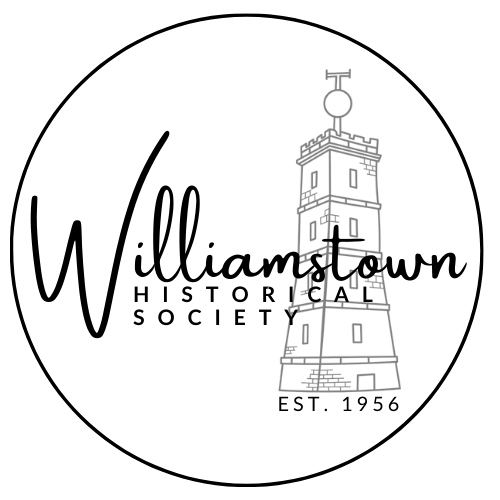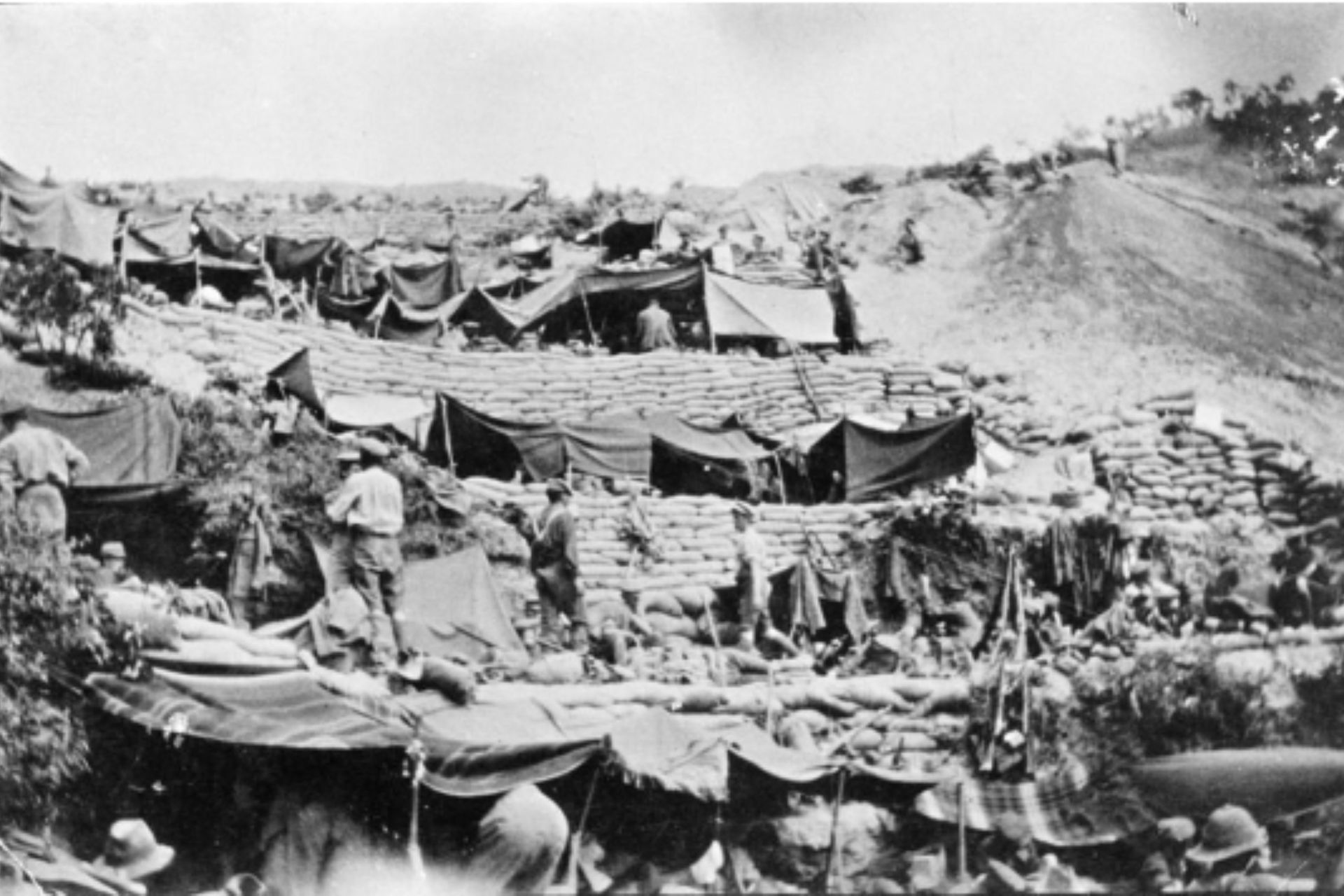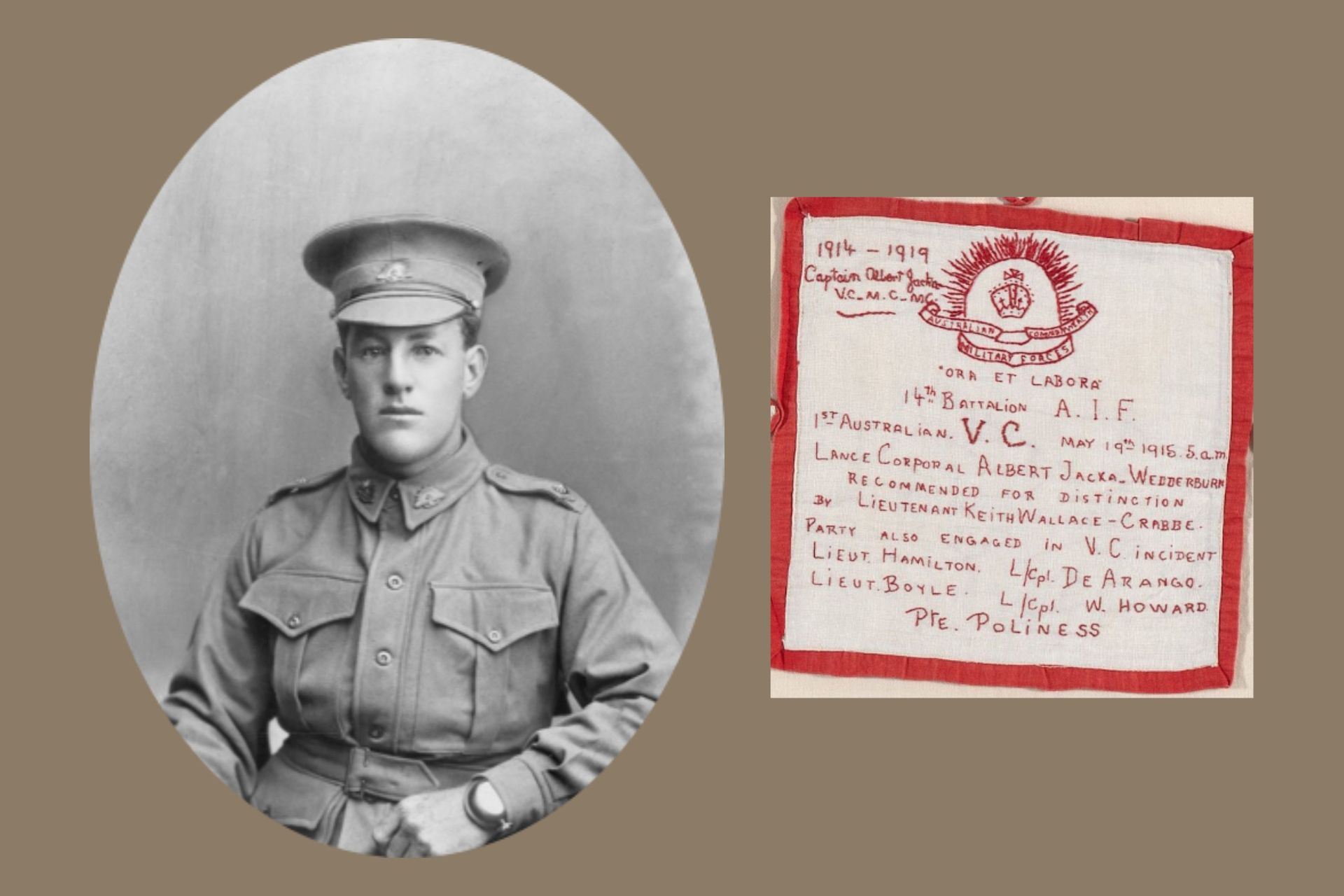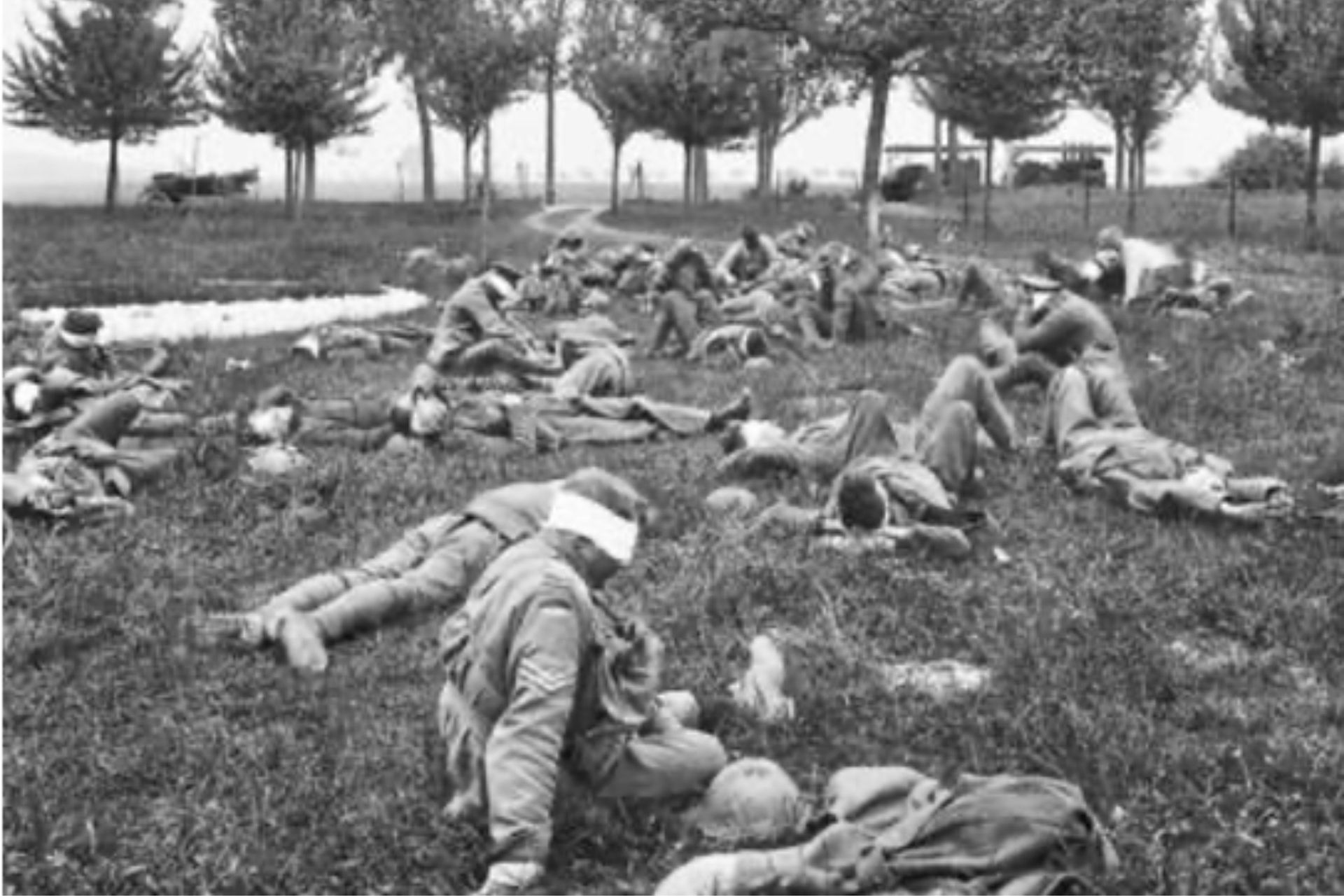Local History
Timeline of Significant events
Williamstown, Newport & Spotswood
This timeline captures some of the significant events in the establishment of Williamstown, Newport and Spotswood.
Our timeline is a dynamic and continuously evolving project that aims to capture and chronicle significant events from history. We believe that history never stands still, and that's why we welcome contributions from individuals who would like to see specific events mentioned. If you have any events that you think would be valuable additions to our timeline, please don't hesitate to email us the details for consideration and inclusion.
- 1830
-
Before white settlers arrived
The area known as Hobsons Bay was inhabited by the Yalukit- willam tribe of the Kulin Nation.
-
1803 - Discovery of the bay
The discovery of the bay and naming of its northern extremity as 'Hobsons Bay' by Governor Phillip, with instructions of two towns to be laid out, 'Williams Town' on the Western shores of the bay and 'Melbourne' on the right bank of the Yarra river.
Charles Grimes noted the suitability of our bay calling it "The Anchorage"
1831 - 1850
-
1835 - Port Harwood & livestock
John Batman first named the new settlement 'Port Harwood'. It was renamed 'Williams Town' after the reigning monarch.
November - Captain Roberson Coltish on barque "Norval sailed from Launceston unloaded 500 sheep and 50 Hereford cattle
-
1837 - Melbourne and Williams Town land surveyed
The town was renamed Williams Town by Governor Richard Bourke and William Lonsdale.
The lands of Melbourne and Williams Town were surveyed by Hoddle and streets laid out, for the first sales of Crown land on 1st June 1837.
Streets of Williamstown named for naval heroes: Nelson, Pasco, and for Governor Bourke's son-in-law and married daughter: Thomson (now Thompson), and Ann Streets.
A ferry service was established between Melbourne and Williamstown, operated by Fire Fly
-
1838 - The First Pier in the Bay
The first pier on Port Phillip Bay was built in Williams Town at the site of the current Gem Pier by NSW convicts
The colony has become home to 55000 sheep, 7000 horses, and over 2000 passengers have arrived with hopes of a better life in the fledgling colong.
-
1840 - First Lighthouse erected at Point Gellibrand
Timber Lighthouse was erected on Point Gellibrand by convict labour.
The first water policy superintendent was appointed.
The port town had just two hotels
-
1841 - Ship building industry begins
The first ship building begins in Port Phillip with small ships and whale boats.
-
1848 - 'Timeball Tower built at Point Gellibrand
A bluestone 'Timeball Tower' and telegraph station built on Point Gellibrand, replacing the original timber building.
-
1851 - A Post office is constructed
The first post office opened in March 1851
1851 - 1870
-
1851 - Gold discovered in Ballarat & Volunteer Fire Brigade established
Gold discovery in Ballarat sparked Victoria's famous gold rush with an estimated 6000 miners arriving each week to seek their fortunes in the goldfields.
The colony of Victoria was founded, after separation from New South Wales.
February
The Williamstown Volunteer Fire Brigade was inaugurated on 28th February 1851.
-
1853 - Astronomical Observatory built in the colony
The first astronomical observatory in the colony was built at Point Gellibrand.
-
1854 - First Telegraph in Australia, Fire brigade, Freemasons and The Chronicle
March 1854
The first Telegraph in Australia was erected between Melbourne and Williamstown covering a distance of 11 miles (17 kilometres). It opened to the public to send messages in March 1854 and during its first year of operation, 4000 telegrams were sent. The lines were progressively expanded to cover more towns in Victoria and then the other major cities.
A fire brigade was established with I.G Gilbert as foreman, Stringer as assistant foreman, and Chas Percy as secretary. The brigade had 20 members, and their equipment was stored at the dockyards.
The Williamstown Chronicle was established
The Williamstown Chapter of Freemasons was formed
-
1855- Fort Gellibrand was constructed
The colonies first defence system was built at Fort Gellibrand
-
1856 -Williams Town Incorporated as a municipality
Williamstown was incorporated as the first 'Municipal Council' on 12th March 1856 and Thomas Mason was elected as the first chairman. Councillors elected were — Messrs. Armstrong, Moxham, Stewart, Dr. Maclean, J. Langford and G. F. Verdon. John Rees was the town clerk,
The first council meetings were held in the Woolpacket Hotel in Thompson Street.
Victorian Yacht Club was established
The Baths complex was built at Williamstown Beach
-
1857 - Victorian Railway Workshops built at Point Gellibrand
The first railway workshops were constructed at Point Gellibrand.
-
1858 - 17 Hotels
The number of hotels in the area expanded from 2 in 1840 to 17 by the late 1850's
-
1859 - Railway to Melbourne built
Williamstown was finally connected to Melbourne via rail linking Spencer Street to Point Gellibrand.
-
1860 - Pier Light & Mechanics Institute
The Pile Light was built and anchored off Shelly Beach
The Bluestone lighthouse was converted into a Timeball Tower
The foundation stone of the Mechanics Institute was laid on 18th February 1860 by Francis Thomas Gell and Dr Eades, Lord Mayor of Melbourne.
Williamstown Botanic Gardens opens to the public
-
1861 - Piers and slips
There has been 13 slips built for ship repairs in the colony and enough piers to accommodate 40 ships.
-
1863 - 1874 Construction of the Alfred Graving Dock
1863 - 4th January. The foundation stone of the Alfred Graving Dock was laid by His Royal Highness, Prince Alfred, the Duke of Edinburgh with it named in his honour.
1863 -1874 - Construction of the Alfred Graving Dock ( a dry dock) was undertaken using 7 ton bluestone blocks, quarried from the basalt plains nearby.
The Dock was designed by William Wardell for the Public Works Department Victoria for use by the Victorian Navy and visiting British Warships. It was the largest structure of it's type in the Southern Hemisphere, measuring 143 m (469 ft) in length, 24 m (79 ft) wide, 8 m (26 ft) deep.
It was built for a cost of £300,000
The dock took it's first ship, the Victorian battleship 'Nelson' in 1874 with the dock becoming a significant part of the dockside industry in Williamstown and
-
1864 - Town boundaries expanded, piped water arrived and a brewery was established
The town boundaries were expanded to include the areas now known as Newport and Spotswood. Williamstown became a 'borough' with an elected Mayor.
The first piped water from Yan Yean arrived.
A brewery was established.
Steam machinery was installed in the railway workshops on Point Gellibrand.
26 Hotels were now operating on the peninsula
Williamstown Racing Club was founded
Williamstown Football Club formed
-
1865 - Gas Works and an American Civil War ship in port 'CSS Shenandoah'
The Gas Works was established to light the town.
25 January 1865 - The American Civil War ship CSS Shenandoah controversially docked to undergo urgent repairs in the Williamstown dockyards. Many of its crew abandoned ship to seek their fortunes in the Victorian Goldfields. When the repairs were complete the ship left port with 42 new Australian recruits aboard, which resulted in a major international incident. The Shenandoah went on to fire the last shots of the American Civil War.
-
1868 - Visit from H.R.H Duke of Edinburgh & Churches
January
H.R.H. Duke of Edinburgh visits Williamstown on 4th January
The Williamstown Baptist Church was founded
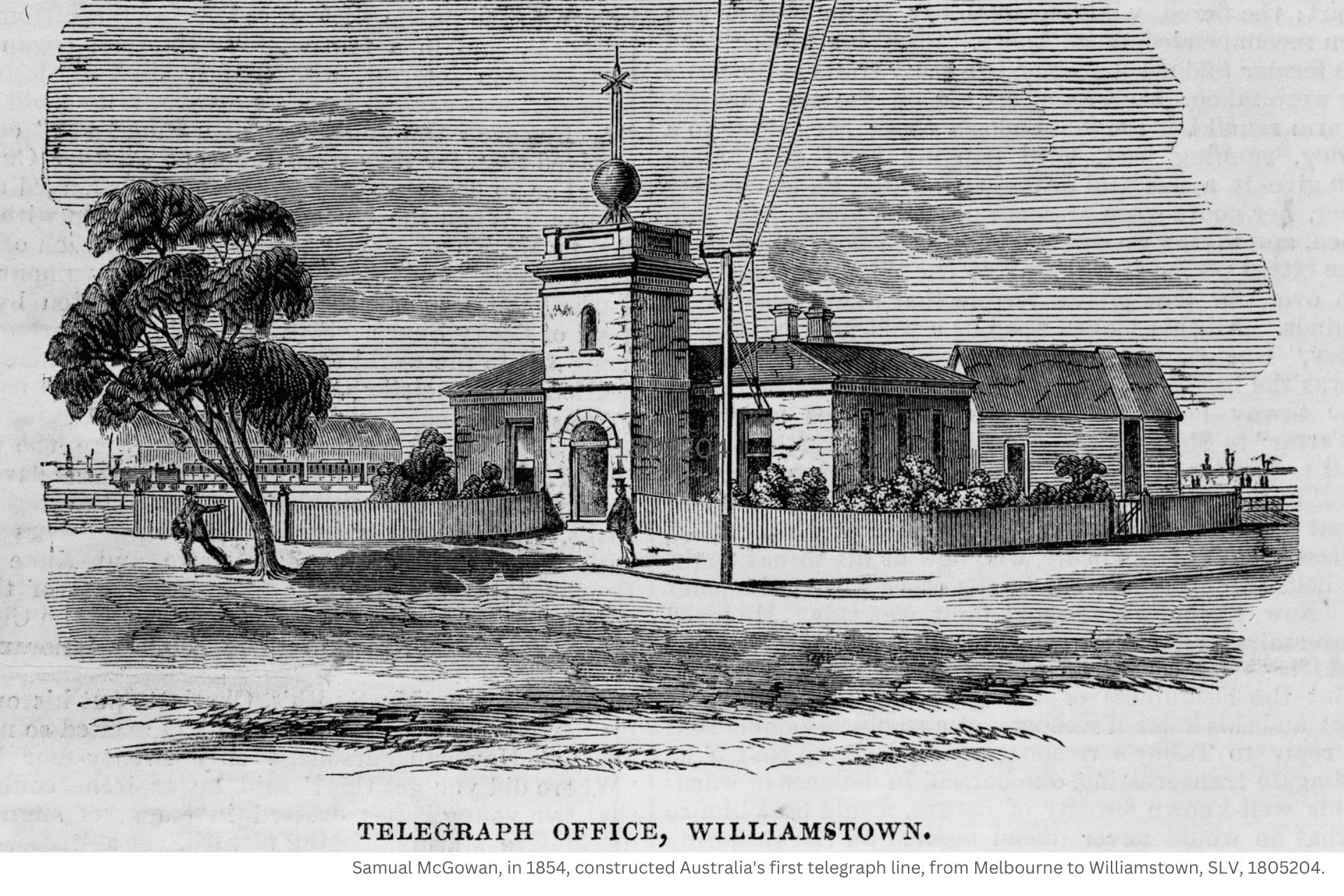
1871 - 1890
-
1871 - HMVC CERBERUS arrived in Williamstown
The HMVC CERBERUS under Captain Panter arrived in Williamstown on 9th April 1871 after a perilous six-month journey from Plymouth.
-
1881 - The Williamstown Junction Railway Station was changed to Newport
-
1886 - Williamstown was proclaimed a town
In April 1886, Williamstown was gazetted as a town and the following year four wards were created.
-
1872 - Williamstown Racecourse built
The Williamstown Racecourse was built
-
1873 - Royal Yacht Club on the move
Royal Yacht Club of Victoria moves to its current sites.
-
1874 - Willy North PS was built
The Williamstown North Primary School was established
March
The Alfred Graving Dock finally opened on 2nd March, 1874, after 10 years of construction.
-
1889 - Victorian Railway Workshops on the move
The Victorian Railway Workshops moved from Point Gellibrand to their current home in Newport due to a lack of available space.
1891 - 1910
-
1892 - Yacht Club Hotel built
The Yacht Club Hotel was built on Nelson Place
-
1894 - A hospital for the people
Williamstown Hospital opened
-
1898 - Lacrosse comes to Williamstown
The Williamstown Lacrosse Club is established in 1898
-
1899 (April) - Queenie Disaster
The yacht Queenie went missing off Werribee, where it was found sunk near Little River with the loss of all hands on board, The yacht's owner John Clark, along with his four sons and two others all perished in this tragedy.
-
1905 - Williamstown Pier Railway Station opened
With the move of the railway workshops to Newport, there became a need for a new station at the pier.
-
1908 - The Great White Fleet visit
In August 1908 at the invitation of Alfred Deakin the Great White Fleet, a fleet of 16 United States battleships, all painted white visited Melbourne as a port of call on its goodwill world tour of 1907-9.
-
1909 - Great fire of Verdon Street
The worst fire in Williamstown's history occurred in December 1909. The fire broke out in a washing copper at the residence of Richard Salt of 23 Verdon St and quickly spread. Within two hours - 24 buildings were destroyed in Verdon Street, Railway Place and Parker Street. Over 100 residents were left homeless.
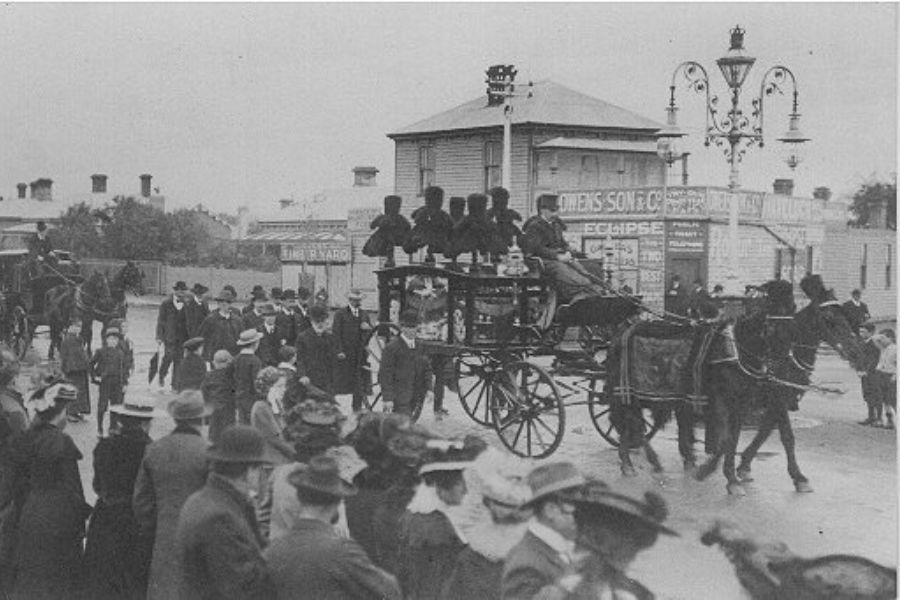
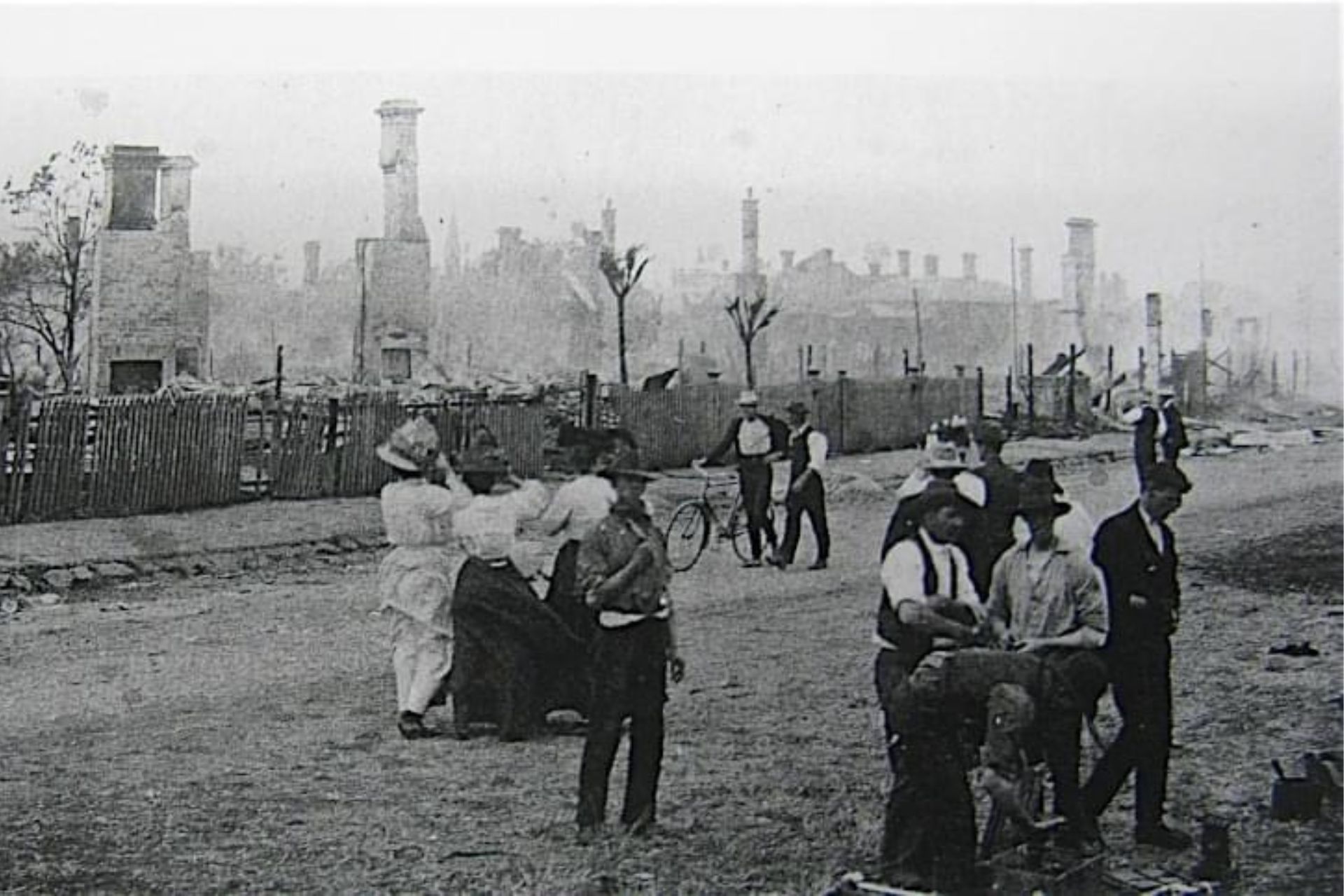
1911 - 1930
-
1911 - The Empress Pavilion Open-air Picture Theatre opened
The Empress in Garden Street opened with a screening of the Melbourne Cup, won on that day by The Parisian, and an Australian drama 'Her Two Sons'
-
1912 - The Williamstown Theatre (later Hoyts Shore Theatre) opened
This popular theatre once stood where the Williamstown Library is today. It had plenty of competition nearby with the Mechanics Hall Pictures in Electra Street, Empress Theatre in Garden Street, and the Plaza Theatre on Melbourne Road Newport. The Shore Theatre closed in 1961 and was demolished the following year to make way for the new library.
-
1919 - Williamstown proclaimed a city
The city was proclaimed by His Excellency the State Governor, the Hon. Sir Arthur Stanley on 17 May 1919. The new Town Hall was opened and the official birth of the city was celebrated by 2000 local residents.
-
1927 - Opening of the town hall
The Williamstown Town Hall was officially opened with.
1931 - 1950
-
1931 - Phar Lap won the Underwood Stakes at the Williamstown Racecourse
The Underwood Stakes is a Group 1 Thoroughbred race over 1800m and ran at the Williamstown racecourse from 1924 to 1947. In 1931, the legendary racehorse Phar Lap won the Underwood Stakes in Williamstown.
-
1933 - Williamstown and Newport Anglers club foundered
This still popular club was established on The Esplanade, Williamstown, opposite Fearon Reserve and adjacent to the bathing pavillion.
-
1934 - Timeball tower extension
Alterations to the Timeball Tower saw it gain an additional 9.1 metres in height and it re-instated as a working lighthouse.
-
1940 - Williamstown racecourse used for housing WWII troops
The final race was won at this seaside racecourse as the site was transformed for housing troops during the early stages of World War II
-
1942 (26th February) - Japanese Spy Plane flies over the bay
During World War II, and only one week after the bombing of Darwin, a Japanese submarine entered the waters off the northern coast of King Island. Here the crew assembled and launched a single-engine float plane. After a pre-dawn launch, the plane flew north over Bass Strait, towards Cape Otway, and then hugged the coastline, avoiding detection and entered Port Philip Bay. Their mission was to observe and record details on defences, infrastructure and industries in Port Phillip Bay. On their reconnaissance mission, the Japanese pilots followed the coastline, past Geelong, directly over the RAAF airfield at Laverton, Altona, and then after flying over the Rifle Range in Williamstown, they were spotted by an anti-aircraft gun operator and the alarm raised. By the time permission to fire was given, the plane was out of sight, hidden in the clouds. The plane continued, undetected, appearing from the clouds quickly to record observations and then using the cloud to disappear again. It flew unchallenged up the Yarra River, over the power station, to Fishermans Bend and the Government Aircraft Factory, the docks, Melbourne City, and then headed around the eastern coast of the bay towards Frankston and Cape Shank before it headed back across Bass Strait.
-
1946 - Williamstown Little Theatre founded
The Williamstown Little Theatre was formed as an amateur theatre company to provide a quality affordable theatre experience for the local community.
-
1947 - Arrival of the first migrants from war-torn Europe
The first ship carrying migrants bound for Melbourne from war-torn Europe arrived in Fremantle. Many of these migrants were housed at the Williamstown Migrant Hostel on Kororoit Creek Road
1951 - 1970
-
1956 ( 22nd November) - Opening of the Summer Olympic Games in Melbourne
The first Olympic Games held in the Southern Hemisphere was opened at the Melbourne Cricket Ground on 22 November 1956.
The Merrett Rifle Range was used as a venue for the Olympic Games Rifle Shooting competitions.
-
1970 (11th October) - Westgate Bridge Collapse
The collapse of two spans of the bridge, into the muddy flats of the river below, left 35 workers dead and more than a dozen injured in what remains Australia's worst industrial accident.
A memorial to those who lost their lives is located on the Western Banks of the Yarra, on Douglas Parade, Spotswood, under the current Bridge.
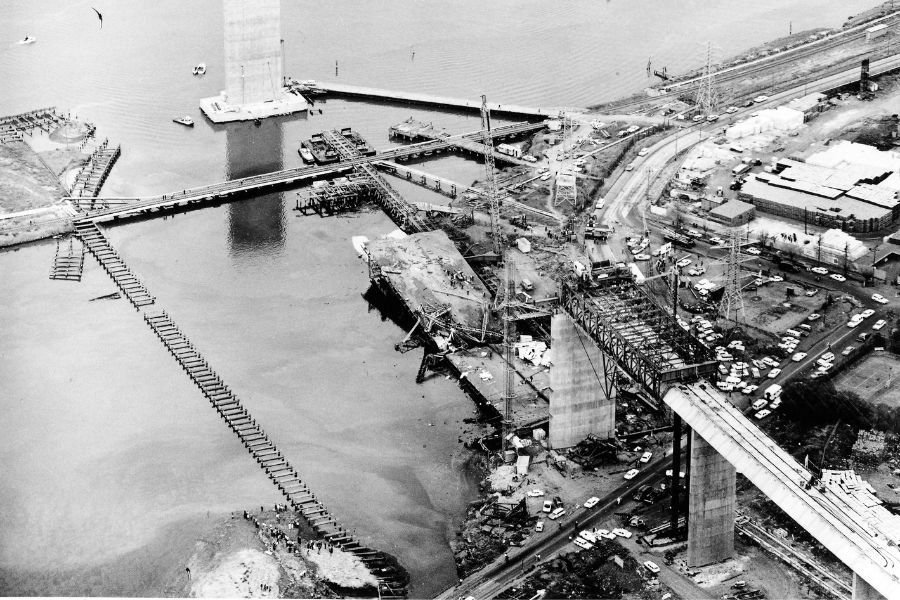
1971 - 1990
-
1976 - Point Gellibrand Pile Light hit by Melbourne Trader
21 June 1976 - On a foggy morning at Point Gellibrand, the Melbourne Trader, a 7000-ton vessel struck the Point Gellibrand Pile Light, with the force of the collision snapping the piles off at the waterline. damaging it beyond repair. The harbour master of the day deemed it too dangerous for his men to repair the light. The lantern and dome of the light were salvaged before it was set on fire on 23rd June.
-
1987 - Rifle Range to residential housing
The Urban Land Authority purchases the Rifle Range for use as residential housing.
Merrett Drive is named in honour of Colonel Charles E. Merrett who sat on the Victorian Rifle Association Council from 1890 to 1946. The historic armoury building and original clubhouse are preserved and home to Nelson Bros Funerals.

Preserving the past for the future
Blogs
USEFUL LINKS
CONTACT
+61 3 9397 1534
williamstownhistsocietyvic@gmail.com
100 Douglas Parade
(PO Box 189)
Wiiliiamstown VIC, 3016
Australia
All Rights Reserved
Williamstown Historical Society
FOLLOW US ON SOCIALS
ACKNOWLEDGEMENT OF COUNTRY
We acknowledge the Bunurong People of the Kulin Nation as the traditional owners of these lands and waterways and pay our respect to Elders past and present.
